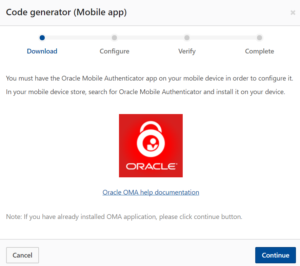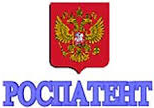If your patent application contains nucleotide or amino acid sequences, to comply with US and PCT rules you need to provide the sequences to the patent office as computer-readable sequence listings. This webinar, which is CLE accredited and is free of charge, explains how to prepare and e-file such sequence listings.
Abstract is required to “commence on a separate sheet”? No!
From time to time an Examiner in the USPTO recites this objection:
The abstract of the disclosure does not commence on a separate sheet in accordance with 37 CFR §§ 1.52(b)(4) and 1.72(b). A new abstract of the disclosure is required and must be presented on a separate sheet, apart from any other text.
An Examiner made such an objection a couple of days ago in one of our cases. We will be able to force the Examiner to withdraw the objection. Continue reading “Abstract is required to “commence on a separate sheet”? No!”
USPTO favors a particular company

The USPTO did a bad thing the other day. It told its customers, falsely, that the only way to do time-based one-time passwords is to use Oracle’s app. USPTO says “you must have the Oracle Mobile Authenticator app on your mobile device” to do one-time passwords. This is flatly false and it wrongly favors a particular company. Hopefully the USPTO will remedy its mistake immediately. I’ll explain this. Continue reading “USPTO favors a particular company”
Most USPTO patent fees will increase January 16
Most USPTO patent fees will increase, some rather substantially, on January 16, 2018. You can see the Federal Register notice here. Here are some examples of fee increases that will take effect on that day: Continue reading “Most USPTO patent fees will increase January 16”
A new Best Practice – reporting docx
 A year ago or so, the USPTO started a beta-test of its system in which docx files play an important role. In the best-test system, an applicant was permitted to file a patent application in docx format rather than PDF format. Likewise, the applicant had the opportunity to receive some documents from the USPTO in docx format in addition to PDF format. Our firm was among the beta-testers of this docx system.
A year ago or so, the USPTO started a beta-test of its system in which docx files play an important role. In the best-test system, an applicant was permitted to file a patent application in docx format rather than PDF format. Likewise, the applicant had the opportunity to receive some documents from the USPTO in docx format in addition to PDF format. Our firm was among the beta-testers of this docx system.
Now, as of September 10, 2017, these features have been made available to all USPTO customers (not merely the beta-test users). This offers a new Best Practice for reporting to clients.
ISA/RU search fee for US filers increases today
 It will be recalled (see blog post of November 3, 2017) that the search fee to be paid by a US filer selecting ISA/RU was scheduled for a fee increase today, December 6, 2017.
It will be recalled (see blog post of November 3, 2017) that the search fee to be paid by a US filer selecting ISA/RU was scheduled for a fee increase today, December 6, 2017.
The fee increase, from $482 to $698, has indeed taken place.
You do not need to worry about accidentally paying the incorrect fee amount, because EFS-Web and ePCT have both been updated to reflect this new fee amount.
As of today the various searching authorities available to those who file in RO/US, ranked by the amount of the search fee, are:
- EP – $2238
- US – $2080
- AU – $1688
- SG – $1552
- JP – $1372
- KR – $1114
- US – $1040 (small entity)
- IL – $963
- RU – $698
- US – $520 (micro entity)
There are many factors in addition to price which a filer might wish to take into account when selecting an International Searching Authority.
Time to first Office Action in PPH?
A blog reader posted this comment recently:
I’m less interested in how long it takes to get PPH decisions, and more interested in how long it takes to get a first Office Action when using PPH. It doesn’t help my client to be able to say that an application is on the PPH track. It helps my client to have an issued patent. Do you know of any data regarding this? I don’t see anything useful at https://www.uspto.gov/corda/dashboards/patents/main.dashxml
This reader is correct that the USPTO dashboard is silent on this particular delay, namely how long it takes, after the grant of a PPH petition, to receive a first Office Action.
We’ve tracked such pendency over many hundreds of PPH cases on our docket. I’ll try to answer the reader’s question and offer some practice tips.
ePCT webinar Tuesday
 This coming Tuesday is the third of a four-part series of webinars about ePCT.
This coming Tuesday is the third of a four-part series of webinars about ePCT.
Part 3. Follow-on filings.
- Best Practice for doing a 92bis change as an Action.
- Best Practice for doing an Article 19 Amendment as an Action.
- Best Practice for filing a Demand.
For more information or to register, click here.
A chance to save a little money on PCT search fees
 Readers will recall (perhaps from my blog post of October 13) that the search fee for ISA/EP will increase (for US filers) on December 1, 2017. This offers an opportunity to save a little money. If your client is planning to file a PCT application in the next week or two, and is planning to pick ISA/EP, consider filing it on November 30 rather than December 1. This will save $139 in search fees.
Readers will recall (perhaps from my blog post of October 13) that the search fee for ISA/EP will increase (for US filers) on December 1, 2017. This offers an opportunity to save a little money. If your client is planning to file a PCT application in the next week or two, and is planning to pick ISA/EP, consider filing it on November 30 rather than December 1. This will save $139 in search fees.
Imminent opportunities to learn about ePCT
The first of four webinars about ePCT will take place starting in about eight hours. Here are the dates and topics: Continue reading “Imminent opportunities to learn about ePCT”
